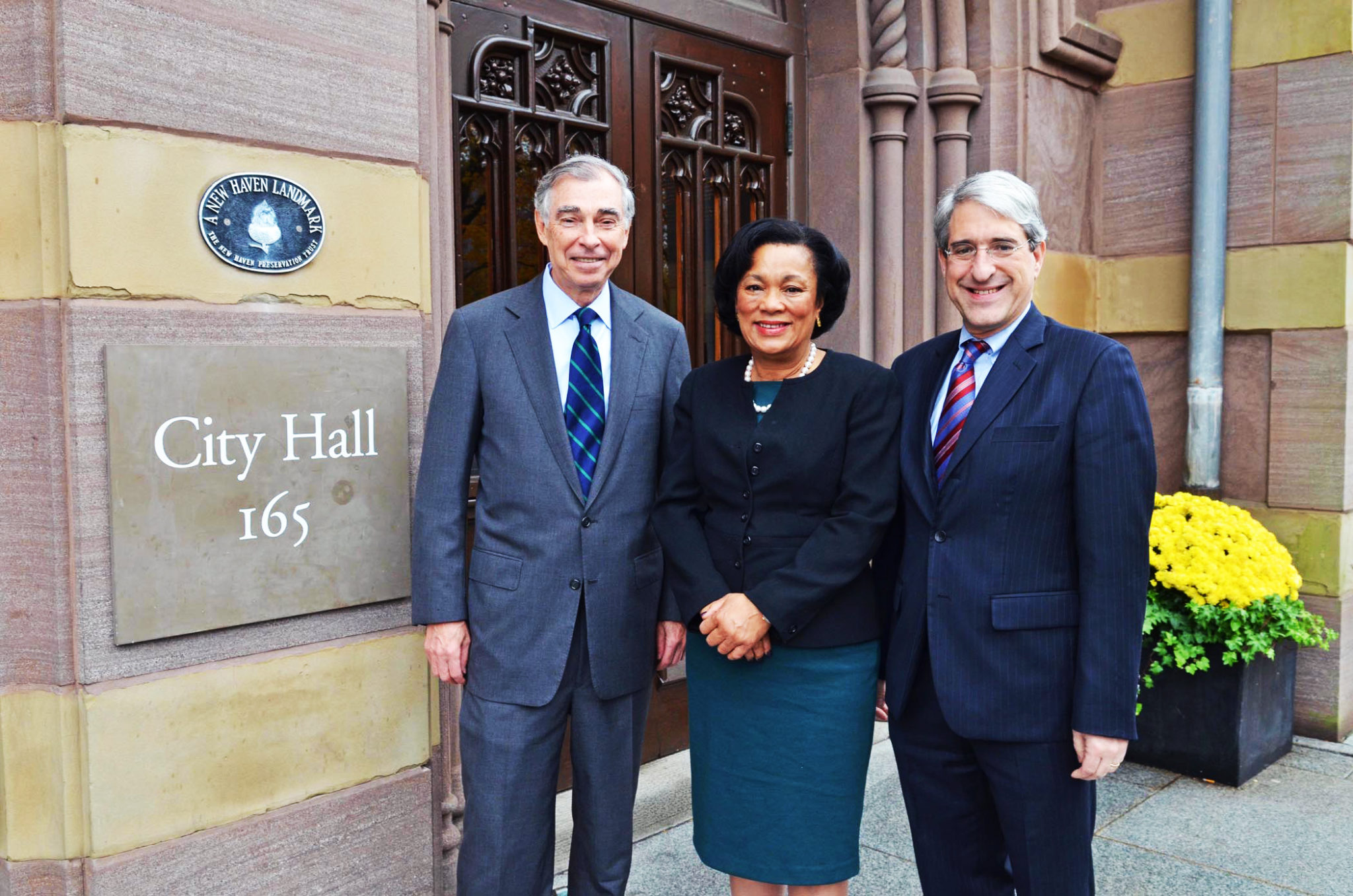
YaleNews
As concerns amount regarding Connecticut transportation infrastructure, University President Peter Salovey and other Yale administrators have been lobbying state government officials for better transportation to and from New Haven.
In an email to the News, Salovey said that faster train service to the Elm City and more flights from Tweed New Haven Airport would increase jobs, expand the tax base and stimulate the local economy. Prior to the November election, he encouraged gubernatorial candidates to support better transportation to the city and, with presidents of other Connecticut universities, hosted Gov. Ned Lamont SOM ’80 for a meeting after he had been elected, Salovey said. He added that the University “urged the state” to repeal the statute that caps the length of Tweed’s runway at 5,600 feet, which is too short for most modern airlines. He called the restriction “the single most important obstacle to better air service from Tweed.”
“A small city, New Haven is easy to navigate and enjoy,” Salovey said. “I believe [being located in] New Haven is a plus when we are recruiting new employees and faculty to work at Yale. However, improving transportation — local transit, commuter rail and air service from Tweed — is important first and foremost, for growing the local economy and creating jobs.”
The Connecticut House of Representatives is currently considering a bill called HB 7143 that would eliminate the restriction on Tweed’s runway, citing the airport’s status as “an important economic development asset” for the state. The bill was referred to the Joint Committee on Transportation on Feb. 20.
Lamont first supported the expansion of Tweed in May 2018. In a section of Lamont’s proposed budget calling for “massive investment” in the state’s “aging infrastructure,” the budget endorsed “an upgraded Tweed Airport opening up central Connecticut for regional air service.”
Yale’s advocacy for better transportation in Connecticut comes as Lamont renews his commitment to rebuilding the state’s infrastructure. In his budget unveiling address before a joint session of the Connecticut General Assembly on Feb. 20, Lamont said the state “must bring our transportation system into the 21st century, too, by speeding up our highways and rail service.”
To raise money for the infrastructure improvement, Lamont said Connecticut could impose tolls on both trucks and passenger vehicles, or only on trucks. Imposing tolls on trucks would generate approximately $200 million in annual revenue, and instituting fees on both trucks and passenger vehicles could raise up to $1 billion each year, per Lamont’s budget.
“These transportation upgrades are the building blocks of our economic future, but we must start now,” Lamont said in his February speech.
But Lamont’s proposal on the new revenue sources prompted criticism from state Republicans. The Connecticut GOP dubbed Lamont “New Tax Ned,” and former Republican gubernatorial nominee Bob Stefanowski attended a rally last week organized by No Tolls Connecticut, a group formed in opposition to Lamont’s budget proposal.
Still, in an email to the News, Senior Vice President for Operations Jack Callahan ‘80 said he was pleased to see Lamont identify improving the state’s transportation as a priority. Connecticut roads are ranked among the worst in the country, and the commuter rails are slower today than they were 50 years ago, Callahan explained. He added that the expansion of Tweed has been an issue for decades and said that better infrastructure would drive job creation and economic growth.
“Making travel to New Haven more convenient would attract more visitors who would spend at local businesses, especially restaurants and hotels,” Salovey said in an email to the News. “It would also create jobs around Tweed [airport] — currently, JFK and LaGuardia capture 63 percent of passengers from Tweed’s market, helping to support jobs in New York instead of New Haven. In fact, Tweed Airport estimates that adding direct flights to Chicago and Washington, D.C. would create about 1,000 local jobs and pump $122 million into the local economy.”
Salovey added that better rail service would reduce reliance on cars and reduce greenhouse gas emissions. Callahan noted that improved transportation will make commuting to and from New Haven easier for students, faculty members and their families.
According to Callahan, Yale’s location in a mid-sized city between New York City and Boston is both “a benefit and a challenge.”
“A city like New Haven is certainly more affordable that NYC or Boston and provides for a close community,” Callahan said. “On the other hand, many faculty and staff are in two career households and attracting talent to New Haven can be an issue. Stronger local economic growth and faster commutes to NYC would provide these families more options. Overall, faster commute times into NYC from CT would likely improve property values and improve the overall tax base.”
Lamont’s budget also includes a “debt diet” policy, which aims to cut long-term debt service payments by 40 percent.
Nathalie Bussemaker | nathalie.bussemaker@yale.edu
Serena Cho | serena.cho@yale.edu







